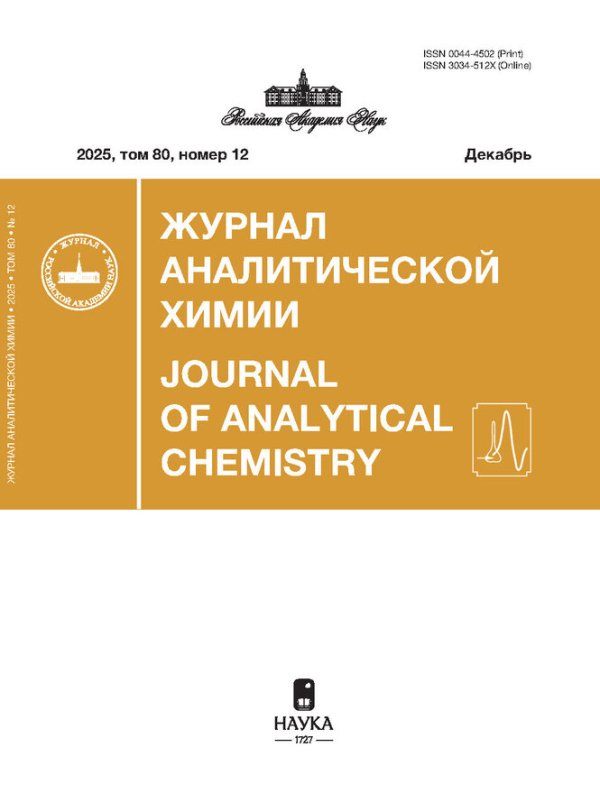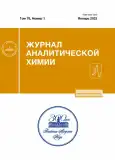Identification and Authentication of Milk Using Digital Colormetry of Indicator Test Systems, Smartphone, and Chemometric Analysis
- Authors: Amelin V.G.1,2, Shogah Z.A.1, Bol’shakov D.S.2, Tret’yakov A.V.3
-
Affiliations:
- Vladimir State University named after Alexander and Nikolay Stoletovs
- Center for Hygiene and Epidemiology in the Vladimir Region
- The Russian State Center for Animal Feed and Drug Standardization and Quality
- Issue: Vol 78, No 1 (2023)
- Pages: 24-33
- Section: ORIGINAL ARTICLES
- Submitted: 14.10.2023
- URL: https://journals.rcsi.science/0044-4502/article/view/135991
- DOI: https://doi.org/10.31857/S0044450223010024
- EDN: https://elibrary.ru/KKFRPQ
- ID: 135991
Cite item
Full Text
Abstract
A simple and an available method is proposed for the identification and authentication of milk using a test device, a smartphone, and chemometric analysis. For the identification by the region of origin and the species of milk (cow, goat, sheep, etc.) and authentication (authenticity, falsification of milk), acid-base indicator papers and test papers are used to determine the total hardness and total alkalinity of water and chloride and sulfate ions. Two indicator systems are proposed. In the first test system, 16 indicator zones are used, of which 12 zones are acid-base indicators with a color change in the pH range of 3–9, and 4 are indicator zones, the color change of which depends on the concentration of calcium ions and chloride, sulfate, carbonate, and hydrocarbonate ions. The second test system uses fluorescent indicators, as well as the intrinsic fluorescence of milk on cellulose paper and a thin silica layer. In this case, the indicator zones of the matrix are irradiated with monochromatic ultraviolet light (365 nm) after applying milk samples to them. A device and a method for measuring the colorimetric characteristics of test systems using a smartphone are proposed. The data array (the sum of the RGB channel values) is processed using the XLSTAT software. The use of chemometric analysis made it possible to establish the authenticity of milk, identify it by the region of origin, and reveal facts of milk falsification by dilution with water, the use of vegetable fats, and emulsification with surfactants. The manufacturers of pasteurized milk were identified and a possibility of determining its fat content by the data array of RGB colorimetric parameters is proved
About the authors
V. G. Amelin
Vladimir State University named after Alexander and Nikolay Stoletovs; Center for Hygiene and Epidemiology in the Vladimir Region
Email: amelinvg@mail.ru
600000, Vladimir, Russia; 123022, Moscow, Russia
Z. A. Ch. Shogah
Vladimir State University named after Alexander and Nikolay Stoletovs
Email: amelinvg@mail.ru
600000, Vladimir, Russia
D. S. Bol’shakov
Center for Hygiene and Epidemiology in the Vladimir Region
Email: amelinvg@mail.ru
600005, Vladimir, Russia
A. V. Tret’yakov
The Russian State Center for Animal Feed and Drug Standardization and Quality
Author for correspondence.
Email: amelinvg@mail.ru
123022, Moscow, Russia
References
- Mohanty T.J., Sahoo J.P., Samal K.C. Common milk adulteration in India and rapid detection techniques // Food Sci. Reports. V. 1. № 10. P. 59.
- Zachar P., Soltes M., Kasarda R., Novotny J., Novikmecova M., Marcincakova D. Analytical methods for the species identification of milk and milk products // Mljekarstvo. 2011. V. 3. № 63. P. 199.
- Musa M.A., Yang S. Detection and quantification of cow milk adulteration using portable near-infrared spectroscopy combined with chemometrics // African J. Agric. Res. 2020. V. 112. № 2. P. 198.
- Ullah R., Khan S., Ali H., Bilal M. Potentiality of using front face fluorescence spectroscopy for quantitative analysis of cow milk adulteration in buffalo milk // Spectrochim. Acta A. 2020. V. 225. Article 117518.
- Karoui R., Baerdemaeker J.D. A review of the analytical methods coupled with chemometric tools for the determination of the quality and identity of dairy products // Food Chem. 2007. V. 102. P. 621.
- Hosseini E., Ghasemi J.B., Daraei B., Asadi G., Adib N. Near-Infrared spectroscopy and machine learning-based classification and calibration methods in detection and measurement of anionic surfactant in milk // J. Food Compos. Anal. 2021. V. 104. Article 104170.
- Schipilliti L., Bonaccorsi I., Consolo G., Mondello L. Isotopic and statistical method for the traceability of milk and dairy products // Food Anal. Methods. 2022. https://doi.org/10.1007/s12161-022-02258-7
- Genis D.O., Bilge G., Sezer B., Durna S. Boyaci I.H. Identification of cow, buffalo, goat and ewe milk species in fermented dairy products using synchronous fluorescence spectroscopy // Food Chem. 2019. V. 284. P. 60.
- El-Garhi H.M., El-Aidie S., Hamdy S.M., Abbas K. Identification of milk types using front face and synchronous scanning fluorescence spectroscopy // Egyptian J. Food Sci. 2020. V. 48. № 1. P. 73.
- Kucheryavskiy S., Melenteva A., Bogomolov A. Determination of fat and total protein content in milk using conventional digital imaging // Talanta. 2014. V. 121. P. 144.
- Younas M., Maryam A., Khan M., Nawaz A.A., Jaffery S.H.I., Anwar M.N., Ali L. Parametric analysis of wax printing technique for fabricating microfluidic paper-based analytic devices (µPAD) for milk adulteration analysis // Microfluidics and Nanofluidics. 2019. V. 23. Article 38.
- Govindarajalu A.K., Ponnuchamy M., Sivasamy B., Prabhu M.V., Kapoor A.A. Cellulosic paper-based sensor for detection of starch contamination in milk // Bull. Mater. Sci. 2019. V. 42. Article 255.
- Silva A.F.S., Rocha F.R.P. A novel approach to detect milk adulteration based on the determination of protein content by smartphone-based digital image colorimetry // Food Control. 2020. V. 115. Article 107299.
- ГОСТ Р 58144-2018. Вода дистиллированная. Технические условия. М.: Стандартинформ, 2019. 10 с.
- Pereira P.C. Milk nutritional composition and its role in human health // Nutrition. 2013. V. 30. P. 619.
- Посудин Ю.И. Люминесцентные методы контроля состава молока // Изв. вузов. Пищевая технология. 1993. № 5–6. P. 79.
Supplementary files


















